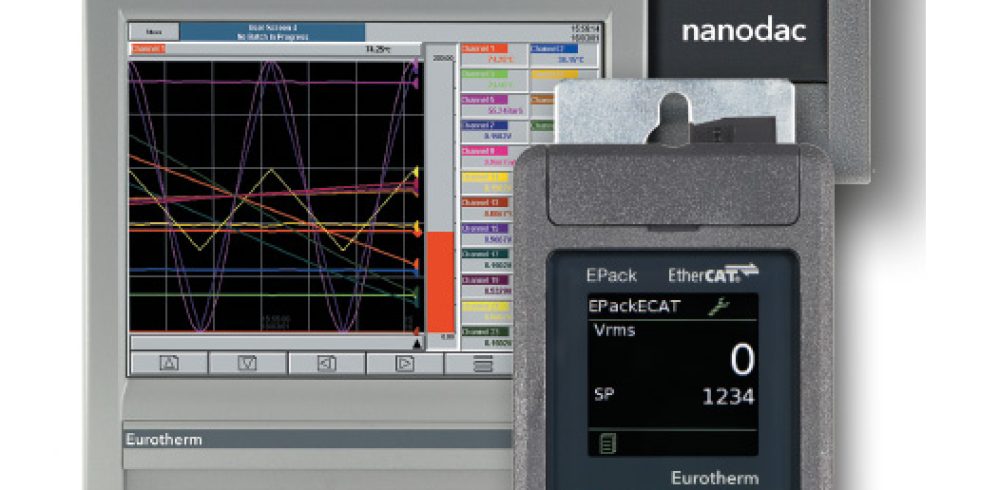Heat treatment processes are a crucial component of many manufacturing processes, and thermal loop solutions have become increasingly popular for achieving improved temperature control and consistent outcomes. But many OEMs are missing opportunities where thermal loop solutions offer more than just greater control. In this article, Peter Sherwin, global business development manager for heat treatment and Thomas Rüecker, senior business development manager for heat treatment at industrial heating technology supplier Watlow, explores the possibilities of thermal loop solutions.
A thermal loop solution is a closed loop system with several essential components, including an electrical power supply, power controller, heating element, temperature sensor and process controller. The electrical power supply provides the energy needed for heating, the power controller regulates the power output to the heating element, the heating element heats the material, and the temperature sensor measures the temperature. Finally, the process controller adjusts the power output to maintain the desired temperature for the specified duration, providing better temperature control and consistent outcomes.
Performance benefits
Heat treatment thermal loop solutions offer several advantages over traditional heat treatment methods, including improved temperature control and increased efficiency. The thermal loop system provides precise temperature control, enabling faster heating and cooling and optimized soak times. In addition, the complete design of modern thermal loop solutions includes energy-efficient heating and overall ease of use.
Thermal loop solutions can also be integrated with Industry 4.0 frameworks and data management systems to provide real-time information on performance. Combining AI and machine learning algorithms can also provide additional performance benefits, such as the ability to analyze data and identify patterns for further optimization.
The effectiveness of heat treatment thermal loop solutions can be measured using metrics such as overall equipment effectiveness (OEE). OEE combines metrics for availability, performance, and quality to provide a comprehensive view of the efficiency of a manufacturing process. By tracking OEE and contextual data, organizations can evaluate the effectiveness of their heat treatment thermal loop solutions and make informed decisions about optimizing their operations.
Supporting sustainability
Heat treatment thermal loop solutions provide several sustainability benefits, including reduced energy consumption and waste. The power controller regulates the power output to minimize energy waste, and the possible integration with renewable energy sources provides a complete power solution that spans from element design to recycling. The thermal loop solutions, in combination with insulation design and materials, provide energy-efficient solutions that contribute to sustainability and reduce the environmental impact of heat treatment processes.
When discussing these systems in the context of greenhouse gas emissions and the environmental impact, it’s essential to consider Scopes 1 (direct emissions), 2 (indirect emissions from energy), and 3 (other indirect emissions), as well as the less common Scope 4 (avoided emissions).
At the component level, energy savings can be realized using current technology. Advanced Selective Catalytic Reduction (SCRs) provide predictive load management functions and hybrid firing algorithms contribute to sustainability by optimizing the energy usage of heat treatment processes. These SCRs offer real-time monitoring and control of energy consumption, while predictive load management systems use specific algorithms to manage peak power loads and adjust to optimize for local conditions such as load shedding or load sharing.
Adaptive thermal system (ATS) solutions are the next frontier of thermal loop solutions. Watlow has decades of experience with thermal systems to help engineers and designers to incorporate ATS technology into a variety of industrial processes and products.
ATS, which combines sensing, heating and control technologies, represents a different and more innovative approach to controlling thermal performance for complex systems, and provides a merged design between heater and control systems.
Regulatory compliance
NADCAP, the National Aerospace and Defense Contractors Accreditation Program, is an industry-driven program that provides accreditation for special processes in the aerospace and defense industries. Heat treatment is considered a “special process” under NADCAP because it has specific characteristics crucial to aerospace and defense components. These characteristics include process sensitivity, limited traceability, critical performance requirements and potential risk.
NADCAP heat treatment accreditation ensures suppliers meet industry standards and best practices for heat treatment processes. The accreditation process includes audits, thorough documentation, and ongoing process control monitoring to maintain high quality, safety, and performance levels.
The aerospace industry’s AMS2750™G pyrometry specification and the automotive industry’s CQI-9 Issue 4 regulations are crucial for ensuring consistent and high-quality heat-treated components. Adherence to these regulations is essential for meeting the stringent quality requirements of the aerospace and automotive industries and other industries with demanding specifications.
Continuous improvement is also emphasized by both AMS2750™G and CQI-9 Issue 4, requiring manufacturers to establish a system for monitoring, measuring and analyzing the performance of their heat treatment systems. This development enables manufacturers to identify areas for improvement and implement corrective actions, ensuring that heat-treating processes are continuously improving and meeting the necessary performance and safety standards.
By integrating these regulations into a precision control loop, heat treatment thermal loop solutions can provide the necessary level of control and ensure compliance with AMS2750™G and CQI-9 Issue 4, leading to the production of high-quality, heat-treated components that meet the performance required and safety standards.
Heat treatment thermal loop solutions provide several benefits over traditional heat treatment methods, including improved temperature control, increased efficiency, and improved sustainability outcomes. The integration with Industry 4.0 and data management systems, as well as the use of OEE metrics, further help enhance the performance of heat treatment processes. As Industry 4.0 digital transformation continues to evolve, heat treatment thermal loop solutions will play an increasingly important role in the future of heat treatment.
Manufacturing & Engineering Magazine | The Home of Manufacturing Industry News















